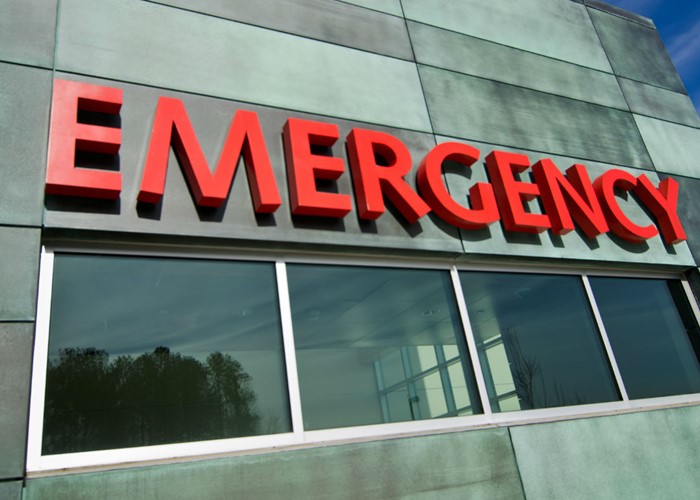How to be prepared for a financial emergency

If you don't have enough savings to fall back on, you should take action now to protect yourself from an unexpected bill.
A third of us are living on the financial edge with no savings whatsoever, according to new research by the Money Advice Service.
Yet over two-thirds of us faced unexpected costs last year, having to find an average of £1,101.
The three most common unexpected costs were: car repairs, optician’s bills, and technology that needed urgent repair or replacement.
Worryingly, a quarter of us would either have to get into debt or increase our debt if we were hit by unexpected bills.
And, unless you can rely on family or friends, getting hold of a decent chunk of cash fast will cost you.
Financial expert Andrew Hagger of moneycomms.co.uk worked out that the cost of borrowing just £400 varies by nearly £130, depending on whether you have a cheap credit card or have to resort to a payday loan.
So it’s better to be prepared in case of an emergency. Here are two ways to make sure you have money on hand for a rainy day.
Save for a rainy day
The classic received wisdom is you should have the equivalent of three months’ salary tucked away in case disaster strikes.
To make that a bit more palatable, the Money Advice Service says those of us without any savings should try to put aside £3 a day. That’s £1,095 a year.
That could mean you need to give up your coffee shop trip on the way to work or cut back on a few pints or glasses of wine down the pub.
Our free budgeting tool MoneyTrack can help you see where you’re spending and look for things to cut back.
If you prefer good old pen and paper, write down everything you spend in a month, right down to the odd chocolate bar or newspaper.
Even if £3 a day isn’t realistic, try to save what you can.
Where to put your savings
Once you have got some savings building up, don’t just hide them in a coin jar or in a drawer – start earning interest on them.
The best place to look for a decent rate right now, with instant access to your money, is a current account.
Nationwide's FlexDirect account pays 5% interest on up to £2,500, providing you pay in at least £1,000 a month into your account (so you might need to make it your main current account).
Clydesdale Bank and Yorkshire Bank both pay 4% on up to £3,000 until March 2015, again so long as you pay in £1,000 a month.
Or, if that sounds too complicated, you could use your tax-free Cash ISA allowance, particularly if you think you won't be able to use otherwise.
Here are the top interest rates available right now on smaller amounts:
|
ISA |
Interest rate |
Minimum deposit |
Access |
|
Stafford Railway Building Society Cash ISA |
1.75% |
£1 |
Branch, post |
|
Britannia Select Access Cash ISA |
1.75% |
£500 |
Branch, post |
|
Darlington Building Society Cash ISA |
1.70% |
£1 |
Branch, post |
|
Kent Reliance BS Easy Access ISA |
1.70% |
£1,000 |
Online, branch, post |
The other great thing about an ISA is, if you don’t use the money, you can move around in the future to get a better rate. And the tax-free benefit is yours for as long as you have the money.
If you do want to use your ISA allowance, here are the top rates on instant access savings accounts:
|
Savings account |
Interest rate |
Minimum deposit |
Access |
|
Britannia Select Access Saver |
1.50% |
£500 |
Branch, post |
|
Kent Reliance BS Easy Access Savings |
1.45% |
£1,000 |
Online, branch, post |
A contingency credit card
If you really can’t save up a decent emergency fund, then think about getting a credit card so you have something to use in emergencies.
If you have a decent credit rating, then you could get one with a representative APR (the annual combination of interest rate and any other charges) of 7.8%, such as the Tesco Bank Clubcard with Low APR card or the Sainsbury’s Bank Nectar Low Rate card.
And if you do get hit by a bill, you could always transfer your debt onto a 0% balance transfer credit card.
If your credit rating isn’t so great, then shop around for a card with as low a representative APR as you can. Credit builder cards such as the Aqua Classic (29.7% APR) and the Vanquis Bank Aquis card (29.8% APR) are at the lower end of this spectrum.
If you have difficulty resisting the temptation to spend on a card, then you could freeze it in a block of ice in your freezer or give it to a trusted family member or friend to keep hold of. Just be sure you can access it quickly in an emergency.
While it’s better to save for a rainy day, a credit card is a far better borrowing option than a payday loan. This is not only because the cost is far cheaper but because many payday lenders won’t lend you more than a few hundred pounds.
More on saving and budgeting
Comments
Do you want to comment on this article? You need to be signed in for this feature